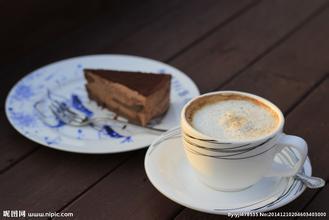Introduction to the characteristics of the method of describing the Flavor of planting Environment for brewing Arabica Coffee in Ethiopia
1-fold the filter paper and attach it evenly to the filter wall
2-on the basis of 12-15g coffee powder per cup, put the coffee powder into the filter paper and shake it evenly.
3-boil water: 180-200ml per cup ready to boil water
4-warm pot: pour a small amount of hot water into the filter pot, shake well and pour out.
5-first cooling: after the water boils, put the wet cold towel on the kettle for 20-30 seconds to cool down to 92 °C.
6-steaming: wet the coffee powder with cooled water and a very fine flow of water. To inject water spirally outward from the center of the filter, the fineness and speed of the flow should be uniform. The amount of water should be just wet, drenched all the coffee powder, at this time the coffee powder will absorb water and expand.
7-Insulation: put the filter pot on the stove to keep warm, as long as the pot with coffee should be put on the stove to keep warm, so as not to affect the taste of coffee after cooling.
8-second cooling: after stewing, continue to put the filter pot on a wet towel to cool down, 20-30s, to about 85 °C.
9-brewing: the method of water injection is the same as 6, the flow can be thicker.
10-complete.
Arabica coffee tree is one of the most important coffee trees in the world. The origin of Arabica species (scientific name Coffee Arabica) is the Abyssinia Plateau of Ethiopia (now the Ethiopian Plateau). In the early days, it was mainly used as medicine to eat. In the 13th century, it developed the habit of baking and drinking. It was introduced into Europe through the Arab world in the 16th century, and further became a favorite drink all over the world.

Important Notice :
前街咖啡 FrontStreet Coffee has moved to new addredd:
FrontStreet Coffee Address: 315,Donghua East Road,GuangZhou
Tel:020 38364473
- Prev

Characteristics of Robusta Coffee Grinding method introduction of Fine Coffee beans in producing areas
"Robusta" coffee usually has an ordinary, rigid and pungent flavor, and because the vast majority of Robusta coffee in the world is planted in low altitude areas (author's note: as of May 2008, only India planted rare high-altitude, high-quality, washed Robusta coffee beans). The flavor produced by different regions and different climates is not very different, there is a lack of.
- Next

Flavor description treatment of Angolan coffee beans introduction to the taste of varieties in producing areas
Since the end of the civil war, the political situation in Angola has remained stable. In September 2008, Angola successfully held its first multi-party parliamentary election since 1992, and the Ann Movement won more than 80% of the seats. In February 2010, the National Assembly of Angola adopted a new constitution. On August 31, 2012, Angola held its first presidential and parliamentary elections since the constitutional amendment. The Anren Movement won the election with 71.84% of the vote, and dos Santos was re-elected.
Related
- Detailed explanation of Jadeite planting Land in Panamanian Jadeite Manor introduction to the grading system of Jadeite competitive bidding, Red bid, Green bid and Rose Summer
- Story of Coffee planting in Brenka region of Costa Rica Stonehenge Manor anaerobic heavy honey treatment of flavor mouth
- What's on the barrel of Blue Mountain Coffee beans?
- Can American coffee also pull flowers? How to use hot American style to pull out a good-looking pattern?
- Can you make a cold extract with coffee beans? What is the right proportion for cold-extracted coffee formula?
- Indonesian PWN Gold Mandrine Coffee Origin Features Flavor How to Chong? Mandolin coffee is American.
- A brief introduction to the flavor characteristics of Brazilian yellow bourbon coffee beans
- What is the effect of different water quality on the flavor of cold-extracted coffee? What kind of water is best for brewing coffee?
- Why do you think of Rose Summer whenever you mention Panamanian coffee?
- Introduction to the characteristics of authentic blue mountain coffee bean producing areas? What is the CIB Coffee Authority in Jamaica?

